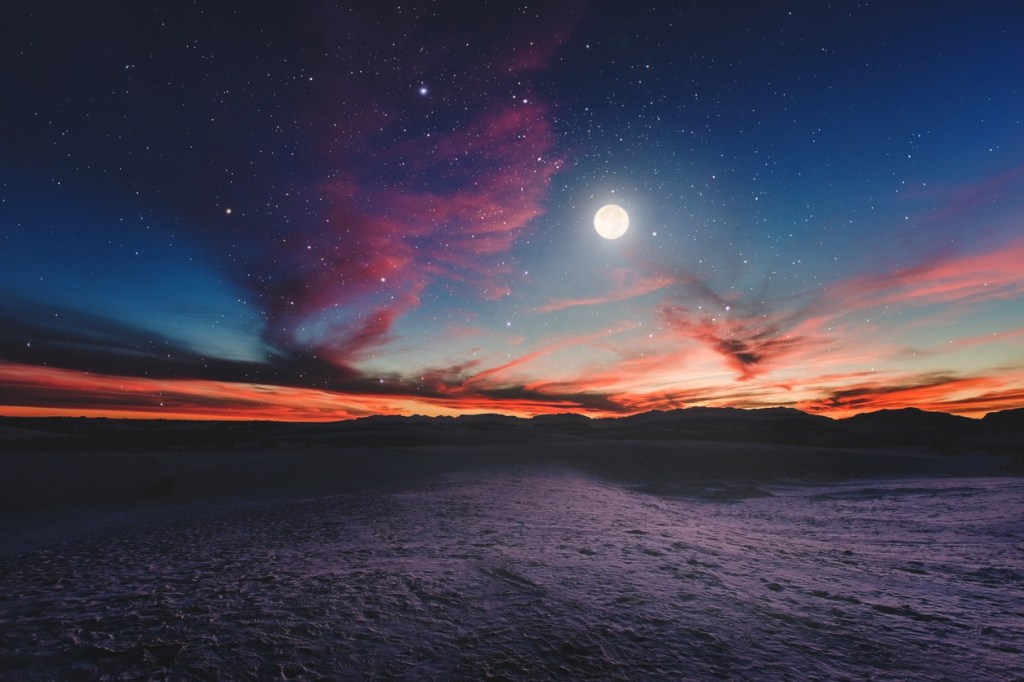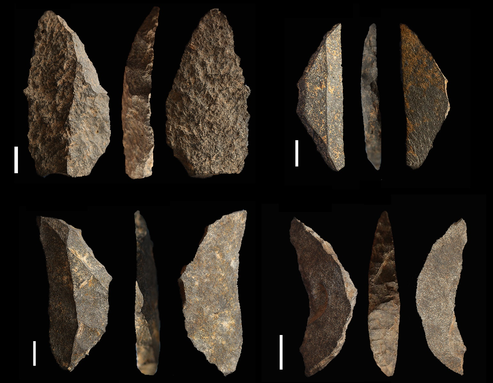If winter’s long, dreary days have you down, take heart — March ushers in the official start of spring by way of the spring equinox, after which point days will once again grow longer (or, technically speaking, brighter). Of course, this means daylight saving time is also on the horizon, so get ready for the clocks to spring forward once again.
Meanwhile, in the night skies above, several planets will be particularly noticeable this month.
For all of March’s celestial highlights, read on.
PLANETS
Date: March 1
On March 1, Venus and Jupiter will come very close together — close enough, according to In-the-Sky.org, to fit together within the view of a telescope; the pair may even be visible to the naked eye, depending on location and conditions. Ideal viewing time will take place in the 6 o’clock hour above the western horizon as darkness sets in. Click here to see the exact time in your area.
Date: March 19
On March 19, the moon will conjunct Saturn, visible in the sky around moonrise. While they’ll still be too far apart to see them together within the view of a telescope, it should be relatively easy to see them through binoculars or even with the naked eye.
Date: March 22
On March 22, there will be a conjunction of the Moon and Jupiter. Similar to the same event happening with Saturn, you’ll likely be able to spot this pair through binoculars or possibly by simply looking with your eyes.
Date: March 24
March 24 brings a lunar occultation of Venus, meaning the moon will pass in front of the planet. Those living in Asia and Africa may be lucky enough to catch a glimpse, and for those elsewhere, the closeness of the two will be widely visible.
Date: March 28
On March 28, we’ll witness the Moon and Mars close together (an event called an appulse). As with the Moon in conjunction with Saturn, you won’t be able to spot this pairing through a telescope since they’ll be too far apart; you may find it easier to view them through binoculars or simply with your eyes.
Date: March 28
Also occurring March 28, Mercury, Venus, Mars, Jupiter and Uranus will align in what’s colloquially known as a “planetary parade,” the first since June, according to USA Today. Before last year’s display, the phenomenon hadn’t occurred in two decades. This month’s event will last a few days and is best viewed through a telescope.
“Don’t forget to look to the sky [at] the end of the month for the planetary alignment, which will have at least five planets — plus the moon — all visible in almost an arc shape as seen from Earth,” astronaut Buzz Aldrin tweeted on March 16.
CONSTELLATIONS

Pyxis the Compass
EarthSky declares March to be a great month for viewing the constellation Pyxis the Compass, said to represent a ship’s compass. To find it overhead, first find the bright star Sirius, then look east. For a handy visual reference, click here.
And according to the Constellation Guide, other constellations that will be visible in the March sky include Cancer, Canis Minor, Carina, Lynx, Vela, and Volans.
OTHER EVENTS
Daylight Saving Time
Date: March 12 at 2 a.m.
During this semi-annual event, the clocks will once again “spring forward” one hour, and evenings will remain brighter just a little bit longer.
March Equinox (aka Spring Equinox)
Date: March 20 at 21:24 UTC/ 1:24 p.m. PT
The spring equinox is one of two annual equinoxes, with the other falling in September to mark the beginning of autumn.
At the March equinox, the sun moves from below or south of the equator to above/north. Here in the Northern Hemisphere, it marks the start of spring; in contrast, it signals the beginning of fall for those living south of the equator. According to TimeandDate.com, on the equinox, all locations on Earth receive approximately the same amount of daylight and darkness, which is how the equinoxes came by their name. (The word “equinox” means “equal night” in Latin.) The operative word here, of course, is “approximately” — many locations will receive a few minutes more or less of sunlight than 12 hours on the dot. And then there’s the South Pole, where the sun will be up for 24 hours!
Full Worm Moon
Date: March 7

March’s full moon is typically known as the “Worm Moon.” Per the Old Farmer’s Almanac, many have believed it came by this name due to the earthworms beginning to appear in the soil as a harbinger of spring. However, more recently, it was determined that for the Naudowessie (Dakota) and other Native American tribes, the “worm” being referred to was more likely beetles in larvae form, which began to appear out of the thawing bark of the trees.
New Moon
Date: March 21
As always, the new moon offers up the best overall stargazing opportunity of the month since the lack of moonlight makes the stars and planets more visible!












